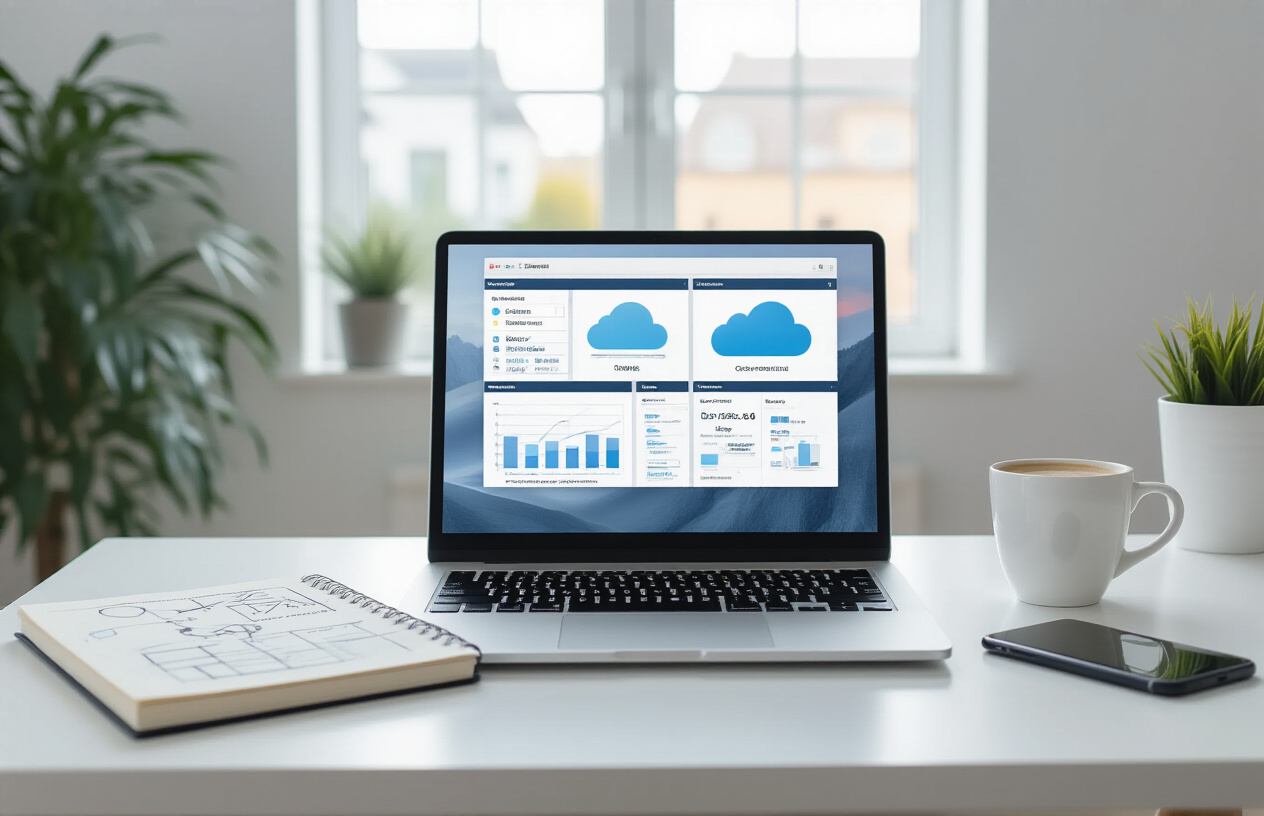Back4App has become a go-to Backend-as-a-Service platform for developers who want to build powerful apps without managing server infrastructure. This comprehensive Back4App guide delivers proven Back4App best practices that will help you squeeze every bit of performance from your backend while keeping it secure and ready to scale.
This guide is designed for mobile app developers, startup teams, and backend engineers who are either getting started with Back4App or looking to optimize their existing setup. Whether you’re building your first app or scaling to thousands of users, these strategies will save you time and headaches down the road.
We’ll walk through essential Back4App setup techniques that set you up for success from day one, including how to structure your database for optimal performance. You’ll also discover Back4App security measures that protect your users’ data and Back4App scalability strategies that keep your app running smoothly as your user base grows. Plus, we’ll cover advanced Back4App performance optimization tricks and Back4App monitoring tools that help you catch issues before they impact your users.
Setting Up Your Back4App Environment for Maximum Efficiency

Configure your development workspace for optimal workflow
Creating an efficient development workspace is the foundation of any successful Back4App project. Start by setting up a dedicated folder structure that separates your client-side code, server-side cloud functions, and configuration files. This organization prevents confusion and makes collaboration with team members much smoother.
Install the Back4App CLI tools and configure your local environment with the proper Node.js version. Most developers find success using Node Version Manager (nvm) to switch between different Node.js versions based on project requirements. Keep your development dependencies separate from production ones in your package.json file.
Set up environment variables for different stages of development. Create separate configuration files for local development, staging, and production environments. This approach prevents accidental data corruption and makes testing new features safer. Store sensitive information like API keys and database credentials in environment files that never get committed to version control.
Consider using a code editor with Back4App-specific extensions and plugins. These tools provide syntax highlighting for Parse SDK functions and can catch common errors before deployment. Popular choices include Visual Studio Code with Parse Dashboard integration and WebStorm with cloud function debugging capabilities.
Choose the right hosting plan based on your project requirements
Back4App offers several hosting plans, each designed for different project scales and requirements. The free tier works well for prototypes and small applications with minimal traffic, but production apps need more robust solutions.
| Plan Type | Best For | Key Features |
|---|---|---|
| Shared | Small projects, MVPs | Basic resources, community support |
| Dedicated | Growing applications | Dedicated resources, priority support |
| Enterprise | Large-scale applications | Custom resources, SLA guarantees |
Evaluate your expected user base and data storage needs before selecting a plan. Applications with heavy read operations benefit from plans with better caching capabilities, while write-heavy applications need robust database performance guarantees. Factor in geographic distribution requirements – some plans offer better global content delivery network support.
Monitor your usage patterns during the first few months and adjust your plan accordingly. Many developers start with a mid-tier plan and scale up based on actual usage rather than projected needs. This approach saves money while ensuring adequate performance during growth phases.
Establish proper version control and deployment pipelines
Version control goes beyond just storing code – it’s about creating a systematic approach to managing changes in your Back4App setup. Initialize your repository with a clear branching strategy that separates feature development from production deployments.
Create separate branches for development, staging, and production environments. This workflow prevents untested code from reaching live users and allows for thorough testing of new features. Use meaningful commit messages that describe both what changed and why it changed.
Set up automated deployment pipelines that trigger when code gets pushed to specific branches. Back4App integrates well with GitHub Actions, GitLab CI, and other continuous integration tools. Configure these pipelines to run tests, validate cloud functions, and deploy only when all checks pass.
Include database migration scripts in your version control system. Back4App database schema changes need careful management to prevent data loss during updates. Create migration scripts that can run both forward and backward, allowing for quick rollbacks when issues arise.
Document your deployment process clearly so team members can follow consistent procedures. Include rollback instructions and emergency contact information for critical issues.
Set up monitoring and logging tools from day one
Monitoring and logging are not optional extras – they’re essential tools for maintaining a healthy Back4App application. Configure comprehensive logging before your first user arrives, not after problems start occurring.
Enable Back4App’s built-in analytics and set up custom event tracking for key user actions. Track metrics like user registration rates, feature usage patterns, and error frequencies. These insights help identify performance bottlenecks and user experience issues before they become critical problems.
Implement structured logging in your cloud functions using consistent log levels and formats. Include relevant context information like user IDs, request parameters, and execution times. This detail makes debugging production issues much faster and more accurate.
Set up alerting rules for critical metrics like database response times, cloud function error rates, and user authentication failures. Configure these alerts to notify your team through multiple channels – email, Slack, or SMS depending on severity levels.
Consider integrating third-party monitoring tools like New Relic, DataDog, or LogRocket for deeper insights into application performance. These tools provide detailed performance analytics and user session recordings that complement Back4App’s native monitoring capabilities.
Regular log analysis helps identify patterns and trends that might not trigger immediate alerts but could indicate growing problems. Schedule weekly or monthly reviews of your monitoring data to catch subtle performance degradation or security concerns early.
Database Performance Optimization Strategies

Design efficient database schemas and relationships
Your Back4App database schema forms the backbone of your application’s performance. Start by normalizing your data structure to eliminate redundancy while keeping related information logically grouped. Choose appropriate data types for each field – using Number instead of String for numeric values can significantly reduce storage overhead and improve query speed.
When designing relationships, consider the query patterns your app will use most frequently. One-to-many relationships work well for most scenarios, but be cautious with many-to-many relationships as they require additional pointer queries. For better Back4App performance optimization, denormalize frequently accessed data by storing commonly retrieved fields directly in your main objects rather than forcing multiple pointer lookups.
Create separate classes for different data types instead of cramming everything into a single “catch-all” object. This approach improves query efficiency and makes your schema more maintainable as your app grows.
Implement smart indexing for faster query execution
Smart indexing transforms slow queries into lightning-fast operations. Back4App automatically indexes the objectId, createdAt, and updatedAt fields, but you’ll need to create custom indexes for fields you query frequently.
Focus on indexing fields used in:
- Where clauses (
equalTo,greaterThan,lessThan) - Sorting operations (
ascending,descending) - Complex queries with multiple constraints
| Index Type | Best Used For | Performance Impact |
|---|---|---|
| Single Field | Simple equality queries | High |
| Compound | Multi-field queries | Very High |
| Sparse | Optional fields | Medium |
Avoid over-indexing since each index consumes storage space and slows down write operations. Monitor your query logs to identify which fields genuinely need indexing based on actual usage patterns.
Optimize query performance with proper data filtering
Query optimization starts with understanding Parse Query’s capabilities and limitations. Always apply the most selective constraints first to reduce the dataset size early in the query process. Use limit() to prevent accidentally retrieving thousands of records when you only need a few.
Batch related queries using includeKey() to fetch pointer relationships in a single request instead of making multiple round trips. This Back4App best practices technique can reduce query time from seconds to milliseconds.
Structure your queries to take advantage of cached results:
- Use consistent query parameters
- Implement pagination with
skip()andlimit() - Combine filters logically using
matchesQuery()for complex conditions
Avoid queries that scan entire collections by ensuring every query includes at least one indexed field as a constraint.
Leverage caching mechanisms to reduce database load
Back4App’s built-in query caching automatically stores recent query results, but you can optimize this further by implementing strategic caching patterns. Enable cache headers in your queries using cache() to control how long results stay cached.
Implement client-side caching for frequently accessed static data like user preferences or configuration settings. Local storage reduces server requests and improves app responsiveness, especially on mobile devices with intermittent connectivity.
For dynamic data, use a tiered caching approach:
- Level 1: Client-side cache (immediate response)
- Level 2: Back4App query cache (fast server response)
- Level 3: Database query (fallback)
Cache invalidation becomes crucial as your app scales. Set appropriate TTL (time-to-live) values based on how frequently your data changes, and implement cache-busting strategies for critical updates.
Monitor and analyze database performance metrics
Regular Back4App monitoring helps you catch performance issues before they impact users. The Back4App dashboard provides essential metrics including request volume, average response times, and error rates. Pay special attention to slow queries – anything taking longer than 100ms deserves investigation.
Set up alerts for key performance thresholds:
- Query response time spikes
- High error rates (above 1%)
- Unusual request volume patterns
- Memory usage increases
Use Parse Query logs to identify bottlenecks. Look for patterns in slow queries – often, missing indexes or inefficient query structures are the culprits. The query analyzer shows execution plans, helping you understand exactly how your queries are processed.
Track these critical Back4App database optimization metrics weekly:
- Average query response time
- Cache hit rates
- Most frequently accessed classes
- Storage growth patterns
Create performance baselines during normal operation periods, then use these as benchmarks to identify when performance degrades. Regular analysis helps you make data-driven decisions about schema changes, indexing strategies, and caching improvements.
Essential Security Measures and Best Practices

Implement robust user authentication and authorization
Setting up strong user authentication forms the foundation of your Back4App security strategy. Start by enabling multi-factor authentication (MFA) for all administrative accounts and encourage users to activate it for their profiles. Back4App supports various authentication methods including email/password, social logins, and custom authentication flows.
Create detailed user roles and permissions that follow the principle of least privilege. Each user should only access data and functions necessary for their specific role. Back4App’s built-in Access Control Lists (ACLs) let you define granular permissions at the object and class level. Set up role-based access control (RBAC) by creating custom roles like “admin,” “editor,” and “viewer” with specific capabilities.
Configure session management properly by setting appropriate session timeouts and implementing secure session tokens. Enable automatic logout for inactive sessions and require re-authentication for sensitive operations. Use Back4App’s cloud functions to implement custom authentication logic when needed, such as validating user credentials against external systems or adding extra security checks.
Configure secure API access controls and permissions
API security requires multiple layers of protection to prevent unauthorized access and data breaches. Start by implementing API keys and restricting their usage to specific domains, IP addresses, or applications. Back4App allows you to create different API keys for development, staging, and production environments, each with distinct permissions.
Set up rate limiting to prevent API abuse and DDoS attacks. Configure request limits based on user roles and subscription tiers. Premium users might get higher limits while anonymous users face stricter restrictions. Monitor API usage patterns to identify suspicious activity or potential security threats.
Create detailed permission schemas for each API endpoint. Use Back4App’s security features to restrict read, write, and delete operations based on user authentication status and roles. Implement field-level security to hide sensitive information from unauthorized users. For example, user email addresses should only be visible to the account owner and administrators.
Configure CORS (Cross-Origin Resource Sharing) settings carefully to prevent unauthorized websites from making requests to your API. Whitelist only trusted domains and avoid using wildcard (*) configurations in production environments.
Protect sensitive data with encryption and secure storage
Data encryption protects your users’ information both in transit and at rest. Back4App automatically encrypts data in transit using HTTPS/TLS protocols, but you need to implement additional measures for sensitive information. Use Back4App’s built-in encryption features or implement client-side encryption before storing data.
Store passwords using strong hashing algorithms like bcrypt or Argon2. Never store plain-text passwords or use weak hashing methods like MD5 or SHA1. Back4App handles password hashing automatically for built-in authentication, but custom implementations require proper security measures.
Implement data masking for sensitive fields in your database. Credit card numbers, social security numbers, and other personally identifiable information (PII) should be masked or tokenized. Use Back4App’s cloud functions to encrypt sensitive data before storage and decrypt it only when authorized users need access.
Set up secure backup procedures with encrypted storage. Regular backups protect against data loss, but they also create additional security risks if not properly protected. Ensure backup files are encrypted and stored in secure locations with appropriate access controls.
Set up comprehensive security monitoring and alerts
Security monitoring helps detect threats before they cause significant damage. Configure Back4App’s logging features to track user authentication attempts, API requests, and data access patterns. Set up alerts for suspicious activities like multiple failed login attempts, unusual API usage, or access from unexpected locations.
Create automated responses for common security events. For example, temporarily lock user accounts after multiple failed login attempts or block IP addresses showing suspicious behavior. Use Back4App’s cloud functions to implement custom security logic that responds to specific threat patterns.
Monitor database queries and API performance to identify potential security issues. Slow queries might indicate SQL injection attempts, while unusual traffic patterns could suggest DDoS attacks or unauthorized access attempts. Set up dashboards that display security metrics in real-time.
Implement regular security audits to review user permissions, API configurations, and data access patterns. Schedule monthly reviews of user accounts to remove inactive users and update permissions based on role changes. Document security incidents and response procedures to improve your security posture over time.
Configure notification systems that alert administrators about critical security events via email, SMS, or integration with tools like Slack or PagerDuty. Quick response times are essential for minimizing the impact of security breaches.
Building Scalable Architecture That Grows With Your App

Design modular code structure for easy maintenance
Building a maintainable Back4App application starts with smart code organization. Think of your app like a well-organized toolbox – everything has its place, and you can find what you need quickly. This approach becomes even more critical when working with Backend-as-a-Service platforms where clean architecture can make or break your scalability efforts.
Start by separating your business logic into distinct modules. Create separate directories for user management, data processing, API integrations, and third-party services. Each module should handle one specific responsibility, making it easier to update, debug, and scale individual components without affecting the entire system.
Your Parse Server configuration should reflect this modular approach too. Group related cloud functions together and use consistent naming conventions. For example, prefix all user-related functions with “User_” and payment functions with “Payment_”. This makes your Back4App dashboard much easier to navigate as your application grows.
Consider implementing a service layer pattern where your cloud functions act as controllers, calling specific service modules that contain your actual business logic. This separation allows you to reuse code across different functions and makes testing much more straightforward.
Implement horizontal scaling strategies for high traffic
When your app starts gaining traction, vertical scaling (adding more power to existing resources) hits a wall pretty quickly. Horizontal scaling – spreading the load across multiple instances – is where Back4App really shines, but you need to design for it from the start.
Database sharding is your first line of defense against traffic spikes. Instead of cramming all user data into one massive table, distribute users across multiple collections based on geographic location or user ID ranges. This approach prevents any single database instance from becoming a bottleneck.
Load balancing becomes crucial as you scale. Back4App handles much of this automatically, but your application architecture needs to support stateless operations. Store session data in your Parse database rather than in memory, so any server instance can handle any user request. This might seem like extra work upfront, but it pays dividends when traffic surges.
Implement caching strategies at multiple levels. Use Back4App’s built-in caching for frequently accessed data, but also consider client-side caching for static content and API responses that don’t change often. Redis integration can help you cache complex query results and reduce database load significantly.
Optimize cloud functions for better resource utilization
Cloud functions are the workhorses of your Back4App application, but they can quickly become resource hogs if not optimized properly. The key is making every function as efficient as possible while maintaining reliability.
Keep your functions lightweight and focused. A function that tries to do too many things will consume more memory and take longer to execute. Break complex operations into smaller, chainable functions that can be called in sequence or parallel as needed.
Database queries inside cloud functions need special attention. Avoid running queries in loops – instead, use compound queries or batch operations. Use select and include parameters to fetch only the data you actually need. A query that returns 50 fields when you only need 3 is wasting bandwidth and processing time.
Memory management becomes critical in cloud functions. Clean up large objects and arrays when you’re done with them. Use streams for processing large datasets instead of loading everything into memory at once. Monitor your function execution times and memory usage through Back4App’s analytics dashboard.
Implement proper error handling and timeout management. Functions that hang or crash consume resources without producing results. Set reasonable timeouts and always include fallback mechanisms for external API calls or complex operations.
Plan for data migration and backup strategies
Data is the lifeblood of your application, and losing it can be catastrophic. A solid backup and migration strategy isn’t just good practice – it’s essential for any scalable Back4App application.
Set up automated daily backups using Back4App’s export features. Don’t rely solely on the platform’s built-in backups; maintain your own copies in separate cloud storage services like AWS S3 or Google Cloud Storage. This redundancy protects you from both platform issues and accidental data deletion.
Design your data schema with migration in mind. Use versioning for your data models and avoid breaking changes whenever possible. When you must modify existing schemas, create migration scripts that can safely transform old data to new formats without downtime.
Test your backup restoration process regularly. A backup that can’t be restored is worthless. Set up a staging environment where you can practice restoring from backups and validate that all data integrity checks pass.
Plan for zero-downtime migrations by implementing blue-green deployment strategies. This means running two identical production environments and switching between them during updates. Back4App’s flexible deployment options make this approach viable even for smaller applications.
Consider implementing data archiving for older records that don’t need to be immediately accessible. This keeps your active database lean and fast while preserving historical data for compliance or analysis purposes. Automated archiving rules can move data older than a specific threshold to cheaper, long-term storage solutions.
Advanced Performance Tuning Techniques

Minimize API response times through smart optimization
The key to lightning-fast API responses lies in reducing unnecessary round trips and streamlining data transfer. Start by implementing query optimization to fetch only the data you need – avoid wildcard selectors and use specific field names instead. Back4App performance optimization becomes dramatically better when you batch multiple operations into single requests rather than making separate API calls.
Caching plays a massive role in response times. Set up intelligent caching strategies using Back4App’s built-in caching mechanisms and consider implementing client-side caching for frequently accessed data. Configure appropriate cache expiration times based on how often your data changes.
Network latency can kill performance, so choose Back4App server regions closest to your users. Compress response payloads using gzip compression and minimize JSON structure complexity. Remove unnecessary nested objects and use lean data models that deliver exactly what your app needs.
Implement efficient file storage and content delivery
Smart file management transforms your app’s performance profile. Back4App’s file storage works best when you organize files logically and use appropriate file formats. Compress images before uploading and choose the right formats – WebP for web applications, optimized JPEG/PNG for mobile apps.
Create a multi-tiered storage strategy where frequently accessed files stay in fast storage while archival content moves to cost-effective solutions. Implement progressive loading for large files and use thumbnails or previews to reduce initial load times.
Content delivery networks (CDNs) distribute your files globally, reducing download times for users worldwide. Configure proper cache headers for different file types – static assets can cache for longer periods while dynamic content needs shorter expiration times.
Consider lazy loading for images and files that aren’t immediately visible to users. This approach dramatically improves initial page load times and reduces unnecessary bandwidth consumption.
Reduce memory usage with proper resource management
Memory leaks and inefficient resource usage slowly degrade app performance over time. Monitor your app’s memory consumption patterns and identify objects that aren’t being properly released. Clean up event listeners, database connections, and temporary objects when they’re no longer needed.
Implement connection pooling to reuse database connections rather than creating new ones for each request. This reduces memory overhead and improves response times. Set reasonable limits on concurrent connections to prevent memory exhaustion during traffic spikes.
Use streaming for large data operations instead of loading everything into memory at once. Process data in chunks and release processed segments immediately. This keeps memory usage stable even when handling massive datasets.
Profile your application regularly to identify memory hotspots. Back4App monitoring tools help track memory usage patterns and alert you to potential issues before they impact users.
Optimize mobile app performance for better user experience
Mobile apps face unique challenges with limited processing power, variable network conditions, and battery constraints. Design your Back4App integration with offline-first principles, allowing users to continue using your app even with poor connectivity.
Implement smart data synchronization that only transfers changed data rather than full datasets. Use delta sync strategies to minimize bandwidth usage and reduce battery drain. Cache critical data locally and sync in the background when network conditions improve.
Optimize image loading for mobile devices by serving appropriately sized images based on screen resolution and device capabilities. Use progressive image loading and blur-to-sharp transitions to provide immediate visual feedback while full images load.
Background sync processes should be intelligent about timing and frequency. Avoid aggressive polling that drains batteries and instead use push notifications or webhooks to trigger updates when necessary.
Use analytics to identify and fix performance bottlenecks
Performance analytics reveal the hidden issues that impact user experience. Set up comprehensive monitoring that tracks API response times, error rates, and user behavior patterns. Back4App’s analytics dashboard provides insights into which operations take the longest and which endpoints generate the most errors.
Create custom metrics that matter to your specific use case. Track user session lengths, feature usage patterns, and conversion funnels to understand how performance impacts business outcomes. Slow loading times directly correlate with user abandonment rates.
Real-time alerting helps you catch performance issues before they escalate. Configure alerts for response time thresholds, error rate spikes, and resource usage limits. Automated monitoring ensures you’re aware of problems even when you’re not actively watching dashboards.
Regular performance audits should become part of your development cycle. Compare performance metrics before and after code changes to understand the impact of new features or optimizations. This data-driven approach to Back4App best practices ensures continuous improvement rather than reactive fixes.
Maintaining and Monitoring Your Back4App Application

Set up automated testing and continuous integration
Building a robust automated testing framework for your Back4App application saves countless hours and prevents critical bugs from reaching production. Start by implementing unit tests for your Cloud Code functions using frameworks like Jest or Mocha. These tests should cover edge cases, error handling, and data validation scenarios specific to your Back4App implementation.
Create integration tests that verify your Parse Server endpoints work correctly with your database schema. Test user authentication flows, data permissions, and API responses under different conditions. Your Back4App monitoring strategy benefits greatly from comprehensive test coverage that catches issues before users experience them.
Set up continuous integration pipelines using GitHub Actions, GitLab CI, or Jenkins to automatically run your test suite whenever code changes occur. Configure these pipelines to deploy successful builds to staging environments first, then production after manual approval. This approach aligns with Back4App best practices for maintaining stable applications.
Include performance testing in your CI pipeline to catch database optimization issues early. Run load tests against your Back4App endpoints to ensure they handle expected traffic volumes without degradation.
Create comprehensive backup and disaster recovery plans
Back4App provides automatic daily backups, but creating additional backup strategies protects your application from various failure scenarios. Implement custom backup scripts that export critical data to external storage services like AWS S3 or Google Cloud Storage on a regular schedule.
Document your recovery procedures step-by-step, including how to restore from different backup points and what data might be lost during each scenario. Test these recovery procedures quarterly to ensure they work when needed. Your disaster recovery plan should include contact information, escalation procedures, and timeline expectations for different types of incidents.
Create backup verification processes that automatically test backup integrity and completeness. Store configuration files, environment variables, and deployment scripts in version control systems separate from your main application code. This separation ensures you can quickly recreate your Back4App environment structure even if your primary systems fail.
Consider implementing cross-region backup storage to protect against regional outages. Document data retention policies and legal requirements for your specific industry or geographic location.
Monitor application health with real-time alerts
Real-time monitoring transforms your Back4App guide from reactive troubleshooting to proactive issue prevention. Configure alerts for critical metrics like response times, error rates, database connection failures, and memory usage patterns. Use tools like New Relic, DataDog, or Sentry to track application performance metrics specific to Backend-as-a-Service environments.
Set up custom Parse Server webhooks that trigger alerts when specific business logic conditions occur, such as failed payment processing or unusual user activity patterns. These domain-specific alerts often catch issues that generic infrastructure monitoring misses.
Create escalation procedures that notify different team members based on alert severity and time of day. Configure alert fatigue prevention by grouping related alerts and setting appropriate thresholds that balance sensitivity with noise reduction.
| Alert Type | Threshold | Response Time | Escalation Level |
|---|---|---|---|
| API Response Time | >2 seconds | 5 minutes | Level 1 |
| Database Errors | >5% error rate | 2 minutes | Level 2 |
| Memory Usage | >85% utilization | 10 minutes | Level 1 |
| User Authentication Failures | >10% failure rate | 1 minute | Level 2 |
Monitor user experience metrics like session duration, feature adoption rates, and crash reports to understand how performance issues affect real users. This data helps prioritize which Back4App performance optimization efforts provide the most value.
Plan for regular updates and security patches
Security patch management requires careful planning to balance security needs with application stability. Create a monthly schedule for reviewing and applying Back4App platform updates, Parse Server updates, and dependency security patches. Test all updates in staging environments that mirror your production setup exactly.
Maintain an inventory of all third-party packages and services your application depends on. Subscribe to security advisory feeds for these dependencies and create automated processes to check for new vulnerabilities weekly. Your Back4App security posture depends heavily on keeping all components current.
Develop rollback procedures for each type of update, including database migration rollbacks and configuration reversions. Document the maximum acceptable downtime for different types of updates and plan maintenance windows accordingly.
Create update communication templates that inform users about scheduled maintenance, expected downtime, and new features. Track update success rates and user feedback to continuously improve your update processes. Schedule major updates during low-traffic periods based on your application’s usage analytics.
Implement feature flags or blue-green deployment strategies to minimize risks when rolling out significant changes. These approaches let you quickly disable problematic features or switch back to previous versions without full application downtime.

Back4App becomes a powerful foundation for your applications when you follow these essential practices. Setting up your environment correctly from the start, optimizing your database performance, and implementing strong security measures will save you countless hours down the road. Your app’s architecture needs to be built with growth in mind, and regular monitoring keeps everything running smoothly.
The real magic happens when you combine all these elements together. Start with the basics like proper environment setup and security configurations, then gradually implement advanced performance tuning as your app grows. Don’t wait until you hit performance walls or security issues to address these areas. Take action now to implement these best practices, and your Back4App applications will be ready to handle whatever comes next.




















